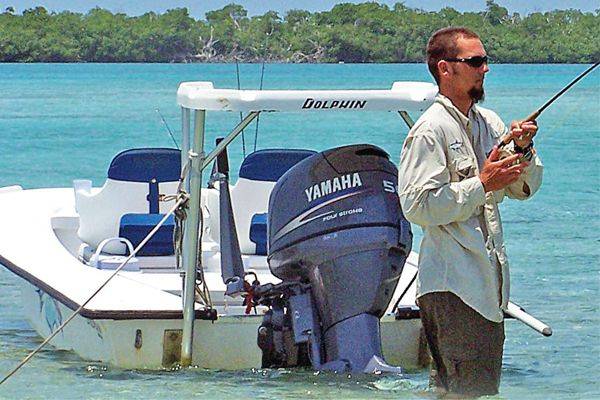Read Part I here.
[dropcap]M[/dropcap]ost are immediate converts, or at least believers, once they see it does work. “There is one word to describe it and you hear it in a lot of places,” Milks said. “Simplicity. It is very basic, very simple. There is not waste, no wasted effort at all. It cuts (fishing) to the bare bones, simple and clutter-free. “You do not need a fly box full of flies and different reels and all of that. Just a rod and line and a fly.” Here he refers to “the word” again … simple.
It also is here that Milks stops to reassure the interviewer, and everyone else for that matter, he is not “anti” when it comes to traditional western fly fishing and he does not want his enthusiasm for Tenkara to come across as such.
“Absolutely not,” he said. “In the corner of my fly tying room, I have as many traditional fly rods as Tenkara rods.” In fact, on a recent steelhead fishing expedition to his native New York, Tenkara was not in the game plan. “It is not the proper application for it,” he said.
Ah, there it is. A time a place for everything. One does not drive a nail with a screwdriver or paint with a hammer. There are proper tools for proper jobs. Milks said it is the same with fishing. “I warm water fish for smallmouth, carp, all kind of fish,” he said. “And I fly fish in those situation. That is the proper application.”
Application and simplicity. Sounds like a pretty good proposition. But, being a certified instructor, certainly things are going to seem easier. How about for the beginner?
“Getting started in (fly fishing) can be intimidating,” Milks said. “But (the practice) of Tenkara is simple and it is easier to pick up. After five minutes of casting practice, I can have (students) catching a fish in 15 minutes. Now, I am not saying every single person can do that every time, but I have seen it happen, more than once.
“It is pretty straightforward.” It also is less expensive than the traditional way.
“Much less expensive,” Milks said. “For around $150 for a rod, $20 from some line and a little bit more for some flies, you can get started for a couple hundred bucks, that’s a fraction of the cost of getting good equipment (for traditional fly-fishing).
Milks splits much of his time between guiding, speaking and making presentations and attending trade shows. He said he has noticed Tenkara is much more recognizable than it was when he started in 2009 and he hopes the trend continues. And he hopes he helps lead the way.

